The Temple of Literature Hanoi – Imperial Academy is Vietnam’s first national university and a symbol of Hanoi’s rich cultural and historical heritage. As a well-preserved relic of the city’s thousand-year-old legacy, it now stands as a must-visit destination, attracting travelers from around the world who seek to explore Vietnam’s intellectual and architectural past.
This article will provide travelers with essential information about the Temple of Literature Hanoi and guide them on how to explore it to the fullest. Let’s go!
1. Introduction: A Timeless Treasure in the Heart of Hanoi
Amid the vibrant streets and modern skyline of Hanoi, there lies a place where time seems to stand still—a sanctuary of wisdom, tradition, and ancient beauty. The Temple of Literature Hanoi is more than just a historical site; it is a testament to Vietnam’s deep-rooted reverence for knowledge and learning.
Built nearly a thousand years ago, this well-preserved complex was Vietnam’s first national university, shaping the minds of countless scholars and mandarins who would go on to serve the country. Today, the Temple of Literature Hanoi Vietnam remains a beloved symbol of Vietnamese culture, drawing visitors from around the world who seek to immerse themselves in its rich history, elegant architecture, and serene atmosphere.
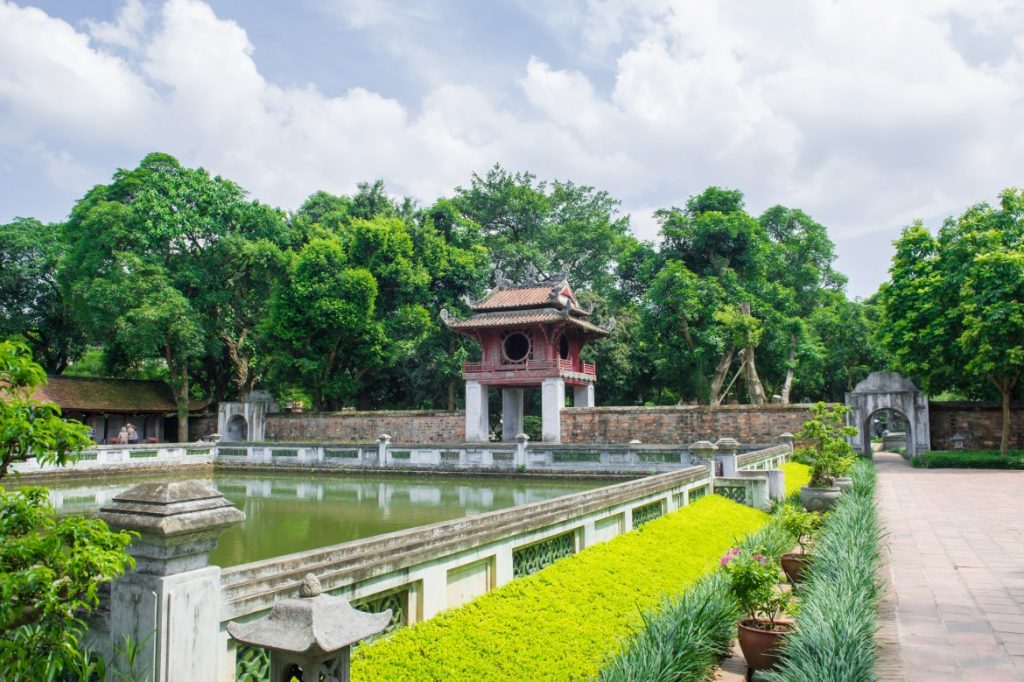
Source: Lux Travel DMC
As you step through its grand gates, you’ll embark on a journey back in time—walking in the footsteps of ancient scholars, admiring intricate stone steles honoring the brightest minds of the past, and witnessing the profound influence of Confucianism on Vietnamese society. Whether you’re a history enthusiast, an architecture lover, or simply a traveler in search of authentic cultural experiences, the Temple of Literature Hanoi is a must-visit destination that promises inspiration and discovery.
2. The Fascinating History of the Temple of Literature Hanoi
The Temple of Literature Hanoi was founded in 1070 during the reign of Emperor Lý Thánh Tông as a Confucian temple dedicated to Confucius, sages, and scholars. It wasn’t just a place of worship but also a center of education and moral development, emphasizing virtues such as respect, humility, and perseverance.
In 1076, Emperor Lý Nhân Tông established the Imperial Academy (Quốc Tử Giám) within the temple grounds, making it Vietnam’s first university. Initially reserved for royal family members and high-ranking officials’ sons, it later opened its doors to exceptionally talented commoners. For over 700 years, this prestigious institution trained generations of mandarins who would become the pillars of Vietnamese governance and society.
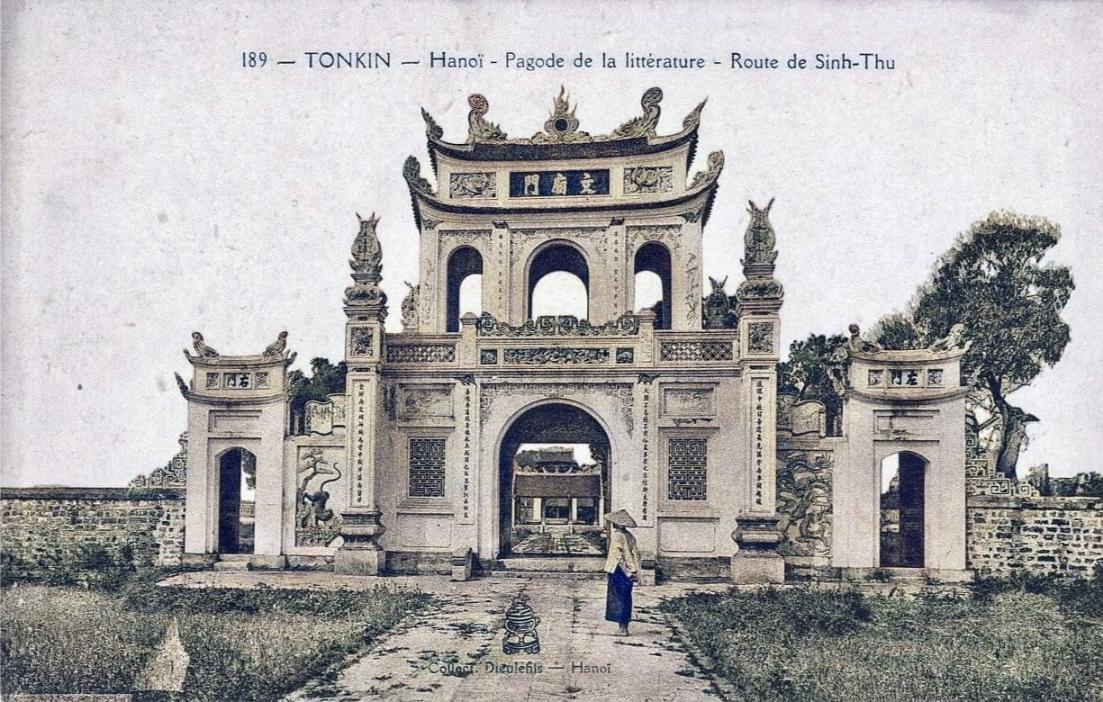
The ups and downs history of the Temple of Literature Hanoi
The university ceased to function in the early 20th century, but the Temple of Literature Hanoi Vietnam continues to stand as a profound reminder of Vietnam’s scholarly traditions and its unwavering dedication to learning.
3. Architectural Marvels of the Temple of Literature Hanoi
The Temple of Literature Hanoi is a masterpiece of traditional Vietnamese architecture, showcasing Confucian design principles that emphasize symmetry, harmony, and balance. Spanning over 54,000 square meters, the complex is divided into five courtyards, each separated by ancient walls and ornate gates. These courtyards represent different stages of a scholar’s journey, from preparation and study to examination and recognition.
First Courtyard – Đại Trung Môn (The Great Middle Gate)
The journey through the Temple of Literature Hanoi begins at Văn Miếu Môn, the main entrance gate. Beyond it lies the First Courtyard, a spacious, tranquil area with well-manicured gardens and age-old trees. In the center stands Đại Trung Môn, the “Great Middle Gate,” flanked by two smaller gates: Đại Tài Môn (Great Talent Gate) and Thành Đức Môn (Accomplished Virtue Gate). These names symbolize the essential virtues of a scholar—talent and moral integrity.
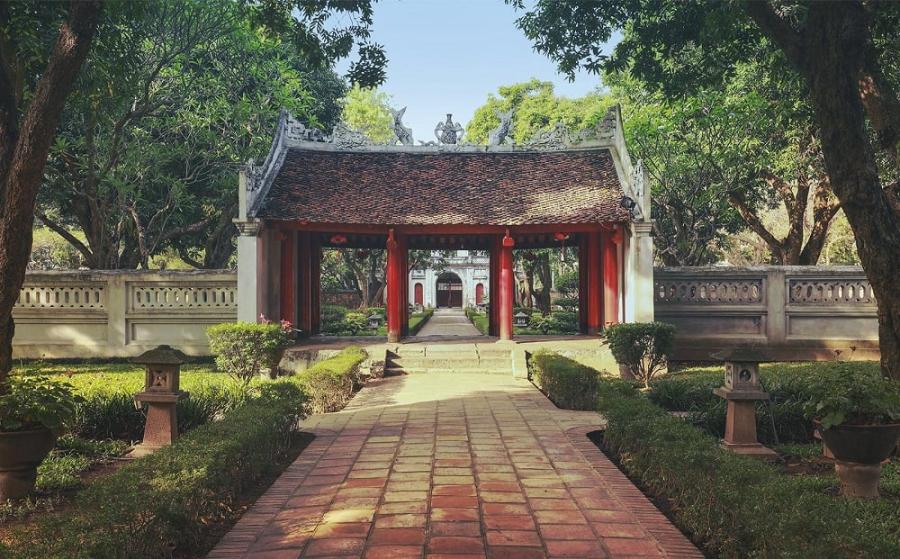
Passing through Văn Miếu Môn, you’ll be welcomed by the serene and majestic space of Đại Trung Môn
Second Courtyard – Khuê Văn Các (The Pavilion of Constellation)
The highlight of the Second Courtyard is Khuê Văn Các, an elegant two-story pavilion built in 1805 under the Nguyễn Dynasty. It features four sturdy brick pillars supporting a wooden structure adorned with intricate carvings and a red-tiled roof. The circular windows on each side symbolize the sun and the moon, representing the endless cycle of knowledge and enlightenment. Today, Khuê Văn Các is recognized as an iconic symbol of Hanoi and appears on Vietnam’s 100,000 VND banknote.
Third Courtyard – Thiên Quang Well & Doctor’s Steles
Stepping into the Third Courtyard, visitors will find Thiên Quang Well, a rectangular pond whose name means “Well of Heavenly Clarity.” This serene water feature reflects the harmony of the temple’s layout, emphasizing balance and wisdom.
On either side of the courtyard stand 82 stone steles, each resting on the back of a stone turtle. These steles, dating from 1484 to 1780, record the names and achievements of scholars who passed the rigorous royal examinations during the Lê and Mạc Dynasties. The turtles, revered in Vietnamese culture as symbols of longevity and wisdom, serve as guardians of knowledge. In 2011, these steles were recognized by UNESCO as part of the “Memory of the World” program.
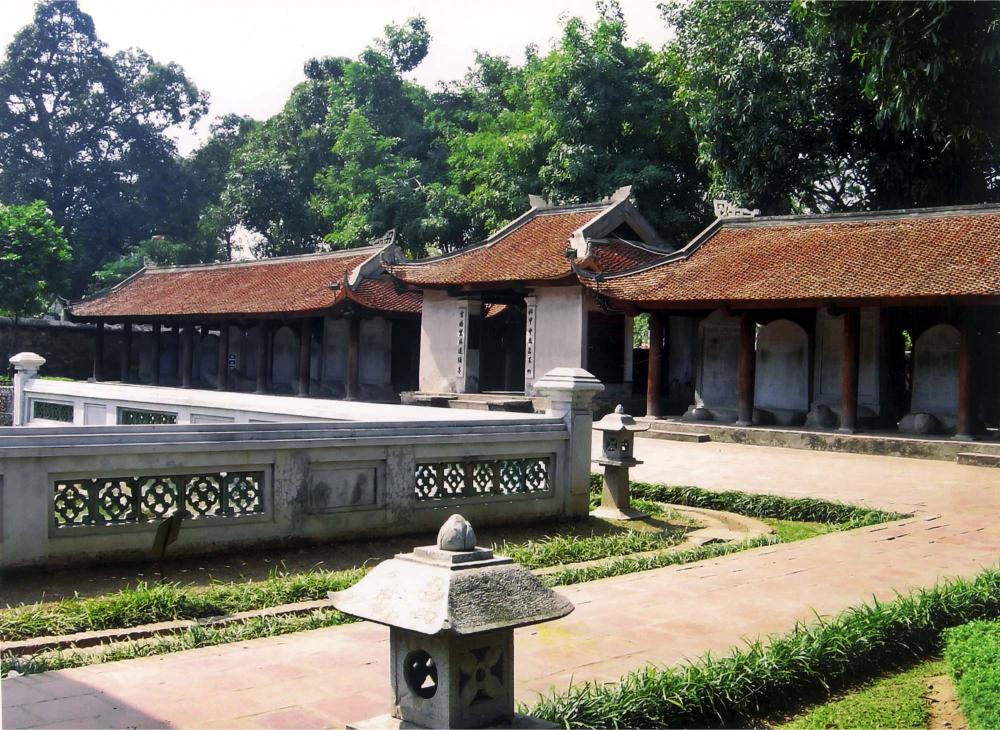
In 2011, these steles were recognized by UNESCO as part of the “Memory of the World” program
Fourth Courtyard – Đại Thành Môn & Đại Bái Đường
The Fourth Courtyard is the heart of the Temple of Literature Hanoi, where Confucius and his most distinguished disciples are honored. Entering through Đại Thành Môn (The Great Success Gate), visitors will find themselves in front of Đại Bái Đường (House of Ceremonies)—a grand wooden hall where imperial scholars once gathered for important rituals.
Inside, an altar holds statues of Confucius and four of his most outstanding disciples: Yan Hui, Zengzi, Zisi, and Mencius. Offerings of incense and flowers continue to be made here by students and visitors seeking wisdom and academic success.
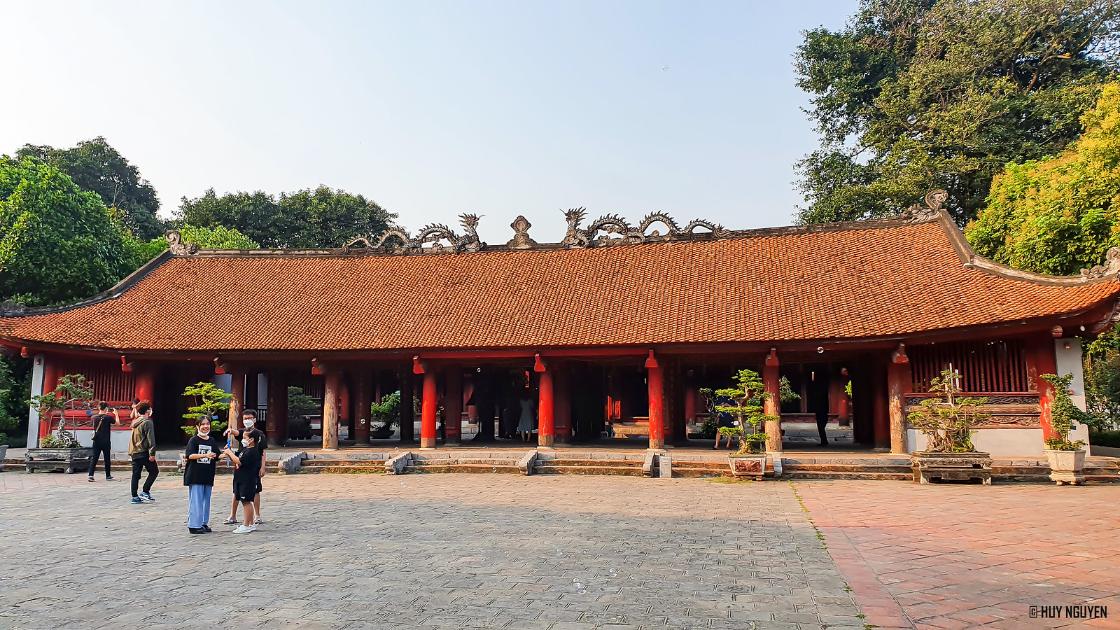
Temple of Literature Hanoi – Where every step tells a story
Fifth Courtyard – Quốc Tử Giám (The Imperial Academy)
Originally built in 1076, the Imperial Academy (Quốc Tử Giám) served as Vietnam’s first national university, where royal and elite scholars received Confucian education. The original structures were destroyed, but in 2000, a reconstruction project restored the Imperial Academy, allowing visitors to learn about its role in shaping Vietnam’s intellectual history.
Today, the Fifth Courtyard houses exhibition halls displaying ancient books, documents, and study materials used by students centuries ago. It offers a fascinating glimpse into Vietnam’s traditional education system.
4. Must-See Attractions & Unique Experiences at the Temple of Literature Hanoi
Beyond its historical significance, the Temple of Literature Hanoi Vietnam offers visitors a range of cultural and spiritual experiences that make their visit truly unforgettable.
Xin Chữ – The Art of Calligraphy
One of the most treasured traditions at the Temple of Literature Hanoi is “xin chữ” (requesting calligraphy). During special occasions—especially Lunar New Year (Tết)—locals and visitors seek beautifully written characters symbolizing prosperity, success, and wisdom from skilled calligraphers. This makes for a meaningful and unique souvenir!
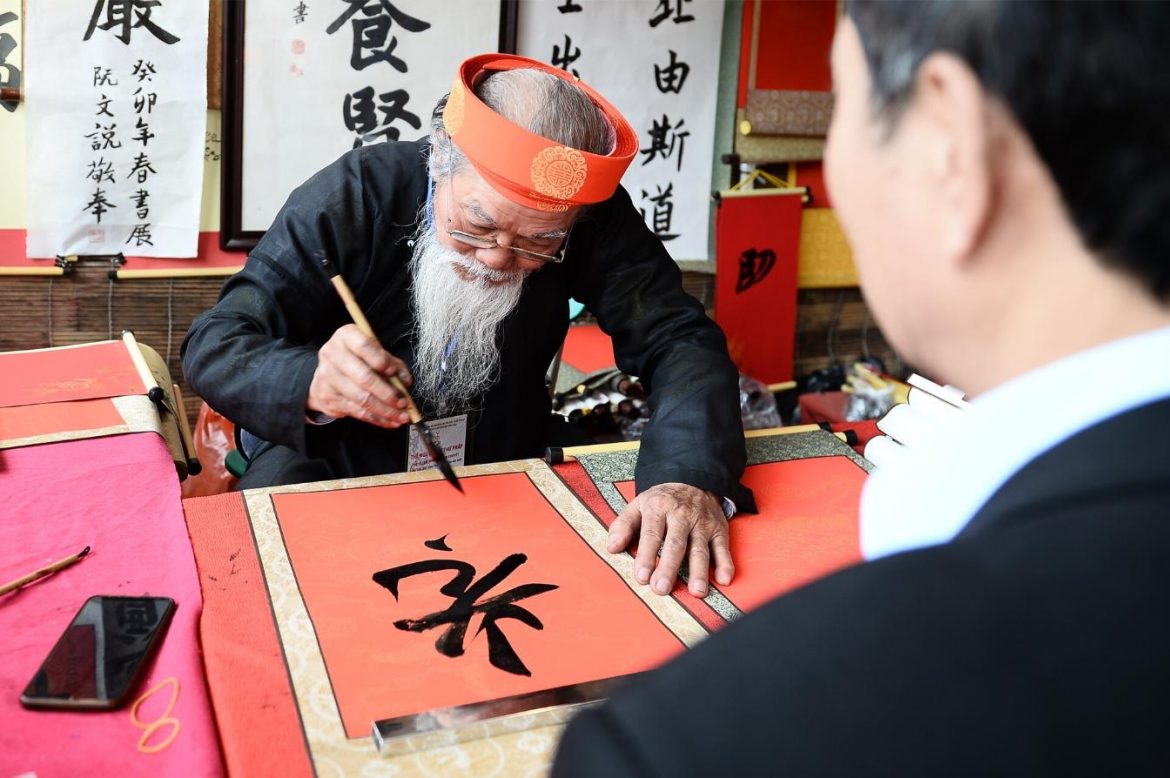
Calligraphy request at the Temple of Literature Hanoi is a cherished Vietnamese tradition
Strolling Through the Tranquil Gardens
The Temple of Literature Hanoi Vietnam is an oasis of peace in the heart of the bustling city. Its well-manicured gardens, ancient banyan trees, and lotus ponds provide the perfect setting for reflection and relaxation.
Iconic Photography Spots
Whether you’re a professional photographer or just love capturing memories, the Temple of Literature Hanoi offers stunning photo opportunities—from the elegant Khuê Văn Các Pavilion to the atmospheric pathways lined with centuries-old trees.
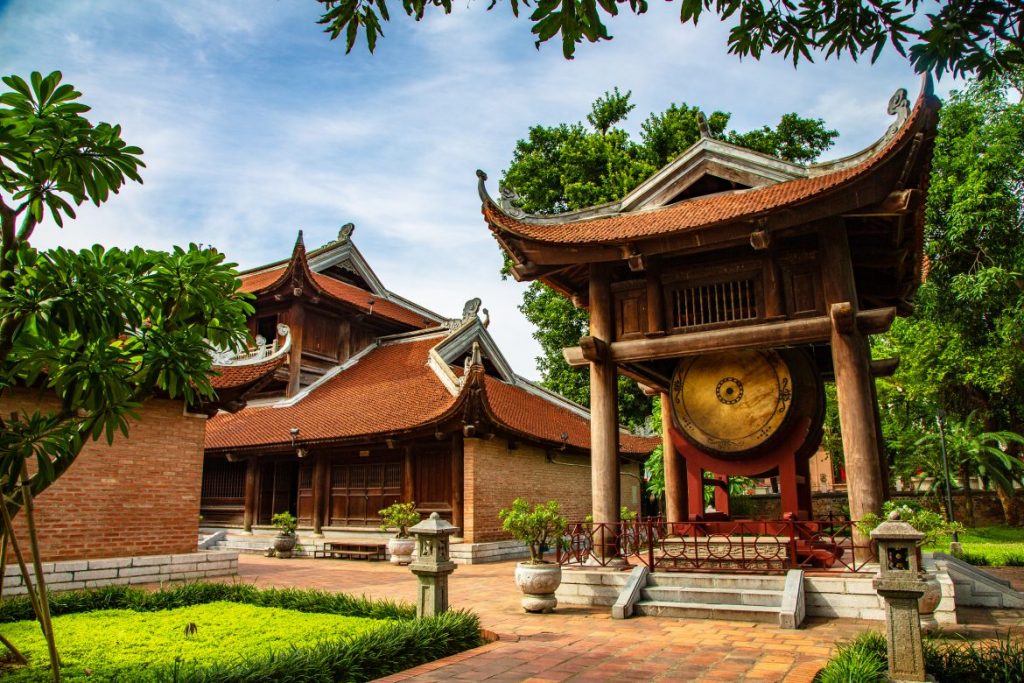
Every corner of the Temple of Literature Hanoi offers a deep glimpse into history
Cultural Performances and Festivals
Throughout the year, the Temple of Literature Hanoi Vietnam hosts various traditional music performances, poetry readings, and cultural festivals, giving visitors a deeper appreciation of Vietnam’s artistic heritage.
5. Other Attractions Near the Temple of Literature Hanoi
After exploring the Temple of Literature Hanoi, why not continue your historical journey with these nearby sites?
- Hanoi Flag Tower (1.1 km): One of the oldest landmarks in Hanoi, offering panoramic views of the city.
- Thăng Long Imperial Citadel (1.2 km): A UNESCO World Heritage Site with over 1,300 years of history.
- Ho Chi Minh Mausoleum (1.6 km): The final resting place of Vietnam’s most revered leader.
- Ho Chi Minh Museum (1.7 km): A fascinating look into the life and legacy of Ho Chi Minh.
- Hoa Lo Prison (1.9 km): A former prison that tells the powerful story of Vietnam’s colonial past and its struggle for independence.
Conclusion: A Must-Visit Destination for Culture and History Lovers
The Temple of Literature Hanoi is more than just an architectural wonder—it is a living testament to Vietnam’s intellectual and cultural heritage. Walking through its ancient courtyards, you’ll feel the echoes of centuries past, where scholars once studied under the shade of towering trees and Confucian ideals shaped the future of a nation.
Contact Lux Travel DMC today for expert consultation and to plan an inspiring journey tailored just for you!
